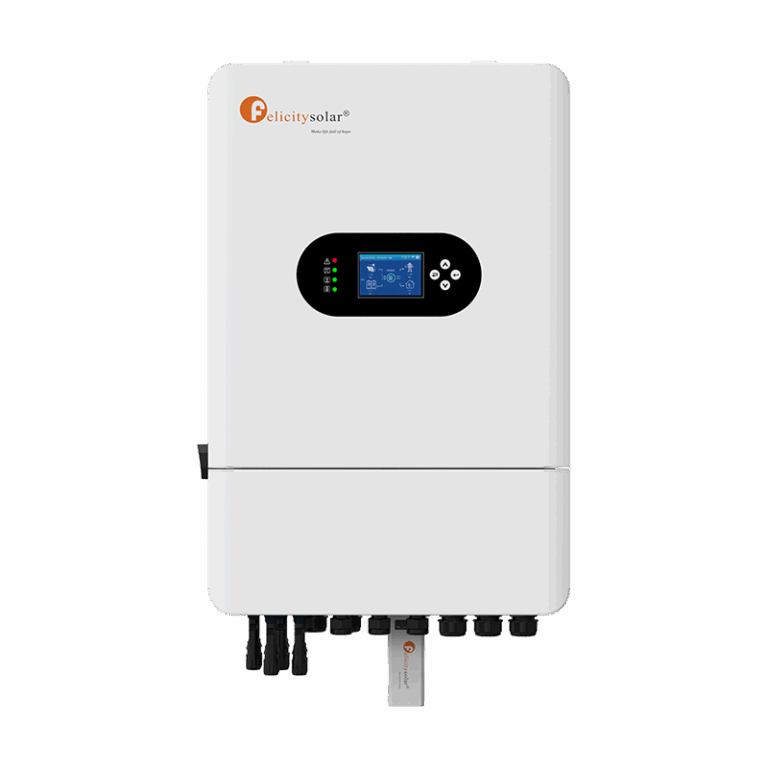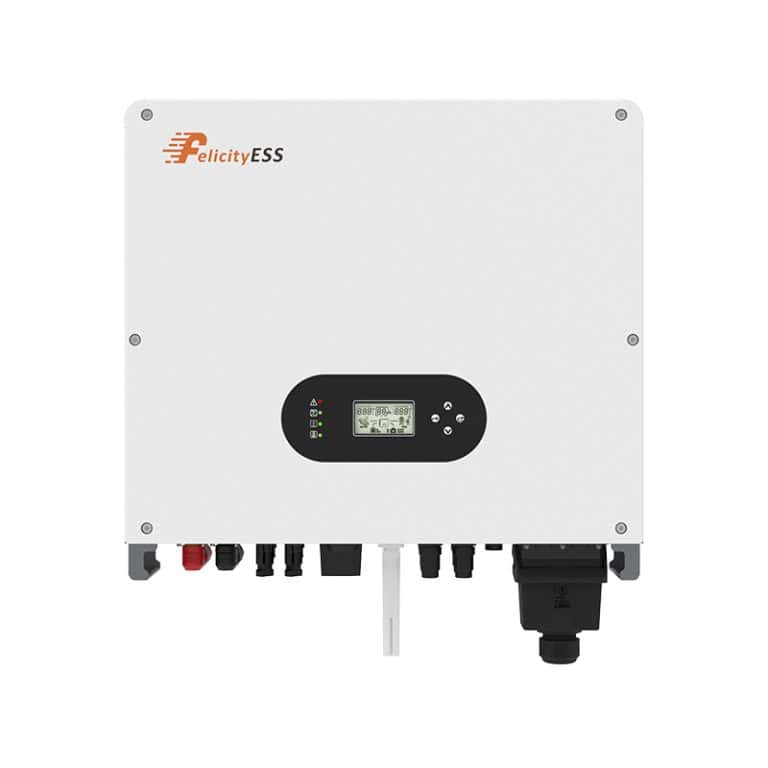Of the major choices for a solar power system, one of the simplest is choosing the right inverter. Residential and commercial property owners would like to be informed about the difference between solar inverters and hybrid inverters since it decides on system efficiency, price, and forward-looking adaptability.
Inverters not only invert direct current (DC) to alternating current (AC), but they also establish the manner in which the energy gets stored, consumed, and utilized to the maximum. One must be capable of understanding these technologies so that one can select a system that would be appropriate for current and future energy needs.

I. Understanding the Solar Inverter vs. Hybrid Inverter Difference
(1)What is a Typical Solar Inverter?
The most basic and common one is a solar inverter. It’s the one that directly plugs into the solar panels, receives the DC electricity they generate, and converts the electricity to make it ready for use in home or business devices in usable AC form. Basic types lack energy storage units, so they are completely reliant on the sun and the backup grid.
- Efficiency Rate: Modern solar inverters have 96–98% efficiency conversion.
- Best Fit: Suited best for locations with consistent grid connectivity and high sunlight availability.
- Limitation: Will not be able to provide backup power during grid failure.
(2)What is a Hybrid Inverter?
Hybrid inverters are advanced, integrating solar inverter functionality and battery management into them. They can hence store unused solar energy in batteries to be utilized later, enabling the supply of power at times of peak usage or failure. This distinction highlights the difference between a solar inverter and a hybrid inverter, especially in terms of flexibility and energy independence.
- Efficiency Rate: The hybrid units also have 95–97% efficiency, but with the additional battery optimization technology.
- Best Fit: Perfect for areas with unstable grids, high utility costs, or residents who desire energy independence.
- Flexibility: Performs wonderfully with solar panels and with backup battery systems.
II. Major Technical Differences Between Solar Inverter and Hybrid Inverter
(1)Energy Flow
- Solar Inverter: Draws energy only from panels to the grid or devices.
- Hybrid Inverter: Distributes power among the panels, batteries, and grid according to requirement. This demonstrates a clear difference between a solar inverter and a hybrid inverter in how energy flow is managed.
(2)Problems of Cost
- Single Solar Inverter: Very inexpensive, $800–$1,200 or so for homes.
- Hybrid Inverter: More costly, typically $1,500–$3,000 based on battery compatibility.
(3)Installation Issues
- Solar inverters are simple to install, and hybrid systems with hookups to batteries, charge controllers, etc. more complex installations.
- But they cost less in terms of space and are less in wiring expenses than the use of individual battery controllers and inverters.
III. Real Life Applications of the Solar Inverter vs. Hybrid Inverter Difference
(1)Household Use
- In good grid, a solar inverter can be adequate for a home load consumption of 500–800 kWh per month.
- A hybrid inverter retains 5–10 kWh of power on average daily by reducing grid reliance to 60%.
(2)Commercial Use
- In variable power-consumption offices or factories:
- Solar inverters cut daytime power bills.
- Hybrid inverters provide safe backup in the event of power outages and prevent costly downtime.
(3)Off-Grid Applications
- A normal solar inverter can never be off-grid without help from the grid.
- A hybrid inverter provides complete off-grid capability with properly sized battery banks.
IV. Which One Fits Better: Solar or Hybrid Inverters?
- For Grid-Tied Solar Systems
Where there is a steady supply of electricity and there is no blackout at all, the ideal option is most frequently a solar inverter. It is reliable, efficient in direct grid connection, and economical. Where there are fewer than 5 hours of blackouts in a year, e.g., in urban cities, a regular solar inverter operation is good enough. This highlights the difference between solar inverters and hybrid inverters in suitability for grid-tied systems.
- For Solar Systems with Energy Storage Needs
If the aim is to utilize as much of the solar as possible and minimize grid reliance, a hybrid inverter would be the ideal option. It offers the ability for batteries to be charged with surplus solar power during the day for nighttime use. Hybrid inverters are also discovered to be able to boost solar self-consumption rates from 40% to up to 80%, which proves useful where the electricity tariff is high. This clearly demonstrates the difference between a solar inverter and a hybrid inverter in energy storage capabilities.
- For Off-Grid Solar Projects
For off-grid installations such as farms, rural schools, or cabins, hybrid inverters are utilized. A pure solar inverter can’t work off-grid. Hybrid inverters convert solar power to mains and some form of electricity if there is a battery. This emphasizes the difference between a solar inverter and a hybrid inverter when considering off-grid functionality.
- If simplicity and cost are most important, → Solar inverter is best.
- If independence, storage, and future-proofing are most important, → A Hybrid inverter is best.
V. Conclusion
The only variation between a solar inverter and a hybrid inverter is flexibility, cost, and storage capacity. Solar inverters are most appropriate for direct grid-connected systems, while hybrid inverters promote safety in energy independence and backup. With increasing world demand for energy, hybrid types are commonly utilized worldwide. The difference between a solar inverter and a hybrid inverter should guide homeowners and specialists in selecting the most suitable system. Like FelicityESS are still in the business of providing low-cost and flexible hybrid inverter solutions, with solar power on the plate and at hand.








